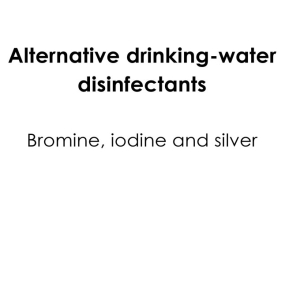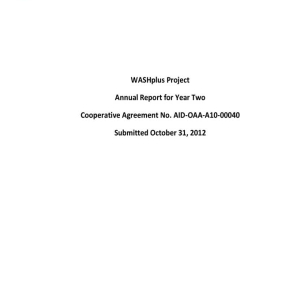Description
Handwashing is one of the most effective means of preventing diarrheal diseases, along with safe stool disposal and safe and adequate household water supply. Evidence suggests that improved handwashing can have a major impact on public health in any country and significantly reduce the two leading causes of childhood mortality – diarrheal disease and acute respiratory infection. Because handwashing with soap can prevent the transmission of a variety of pathogens, it may be more effective than any single vaccine or hygiene behavior. Promoted broadly enough, handwashing with soap can be viewed as an essential do-it-yourself vaccine. Almost every household in the world, regardless of economic status, has soap. Handwashing with soap at key times, however, is not widely practiced. If the millennium development targets for reduction in child mortality are to be met, handwashing habits must be improved along with access to safe water and sanitation.
The Global Public-Private Partnership for Handwashing has brought together various organizations and sectors to promote handwashing with soap on a large scale. The partnership includes:
- governments who, by prioritizing hygiene, enable handwashing to move from piecemeal, village-by-village, efforts to national programs;
- donor organizations who increasingly include handwashing in their water, sanitation, health, and education programs;
- the private sector which has brought state-of-the art marketing knowledge and techniques to the table;
- academic and scientific organizations who are contributing the latest behavior change theory and scientific evidence of the effectiveness of handwashing; and
- non-governmental and community-based organizations who are aiming to integrate handwashing messages into their own work
The Handwashing Handbook lays out the experiences of this global partnership in a practical guide. While countries are still optimizing and experimenting with approaches, it is important to disseminate what is currently known. This way others can begin designing programs and contributing to the global body of knowledge and experience in the fight against child mortality. This guide is for staff in governments and development organizations charged with carrying out handwashing programs. Decision makers in ministries and funding agencies will also find assistance in this book for designing policies and programs to improve public health.
The approach to large-scale handwashing promotion covers the following components:
Laying the Foundation for a National Handwashing Program
To be successful, handwashing programs must address a recognized health need and have the support of key stakeholders. Government, industry, and donors can all offer unique resources which are necessary to ensure the success of a large-scale program. Conducting a situation assessment and, where needed, making the case for handwashing on topics ranging from cost- effectiveness to health impact will give the handwashing program a solid foundation.
Understanding the Consumer
In order to change long-held habits related to behaviors such as handwashing, a firm understanding of the factors the drive and facilitate behaviors in target consumers must be established. This means putting the needs of the target audience – primarily mothers and caretakers of children under five years old as well as school-aged children – at the center and having their perspective determine the nature and scope of all promotion activities. Carrying out consumer research provides a baseline for measurement and understanding of the target audience by answering four broad questions: What are the risk practices? Who carries out the risk practices? What drivers, habits, and/or environmental factors can change behavior? How do people communicate?
Program Implementation
The results of consumer research drive program implementation including which environmental factors related to handwashing need to be addressed, what is the most appropriate and appealing way to promote handwashing, and what is best mix of communication channels to reach the target audience. Implementation also includes the careful monitoring of the program and periodic evaluation and adjustment.
Program Organization
When partners from different backgrounds and sectors are not accustomed to working together, establishing common aims and trust takes time and effort. Placing a program coordinator in a trusted organization is an effective approach to steering diverse partners towards a common objective.
Throughout the handbook, references, case study information, and tools are provided to support handwashing programs. Users are encouraged to combine their creativity with existing knowledge in order to innovate and optimize approaches to large-scale handwashing promotion.







 AAEA
AAEA AAEA
AAEA
Reviews
There are no reviews yet.